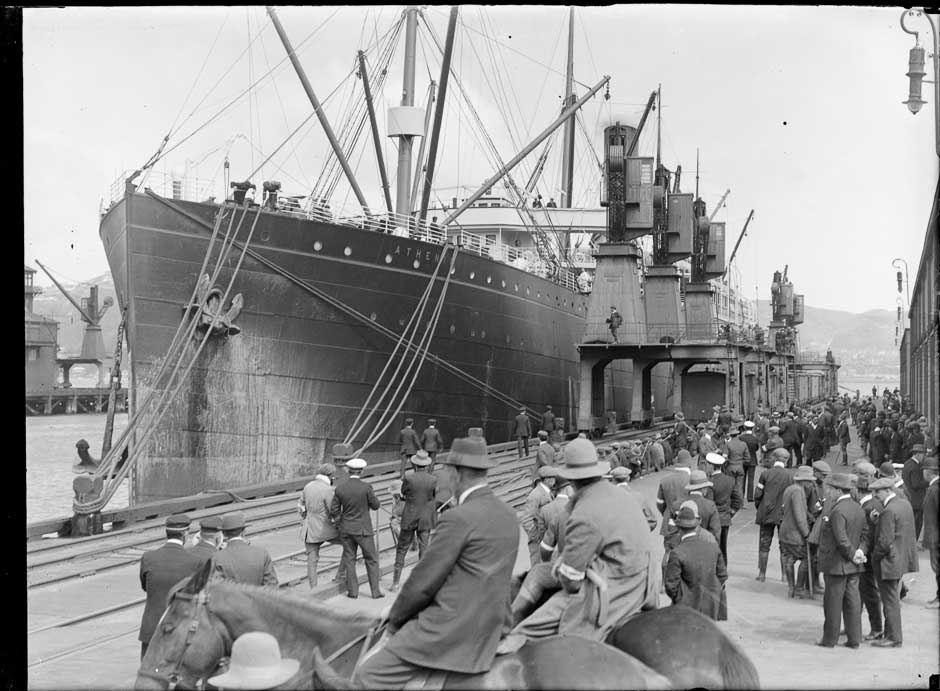
Special constables, known to their opponents as ‘Massey’s Cossacks’, guard men handling cargo from the Athenic. The scene is Queen’s Wharf, Wellington, during the Waterfront Strike, November 1913.
The area around Queen’s Wharf was the focus of major activity during the strike. It was invaded by strikers and their supporters on 24 and 25 October, after which all loading of ships ceased. Strikers picketing the wharves prevented access until 5 November, when the specials opened the wharves to ‘free labour’ or ‘scabs’ following the Battle of Featherston Street.
‘Scabs’ was the term unionists used for strike-breakers who were prepared to work on the wharves. Farmers, rural workers and some Wellington watersiders acted as strike-breakers. They were enrolled in a new arbitrationist union and given accomodation on board ships or in the ‘Donkey Room’. This was a room in X Shed, next to the Customhouse, that had previously been the waiting room and meeting room for the watersiders’ union. From 10 November the Harbour Board set up the Donkey Room to accommodate ‘free labourers’ between shifts, so they would not have to cross any picket lines. The shed had bunks and hot baths, and could accommodate nearly 400 men.
See more images of Queen’s Wharf during the strike here (Flickr)

Community contributions